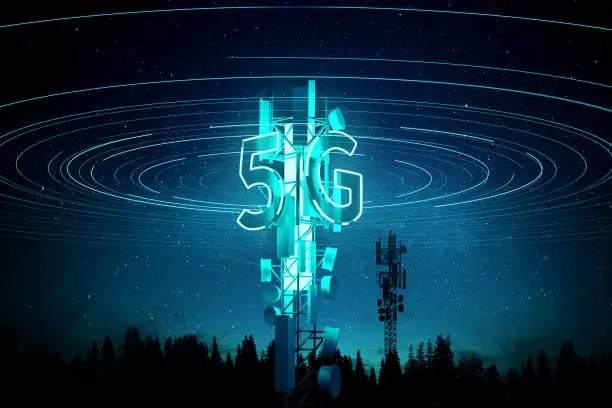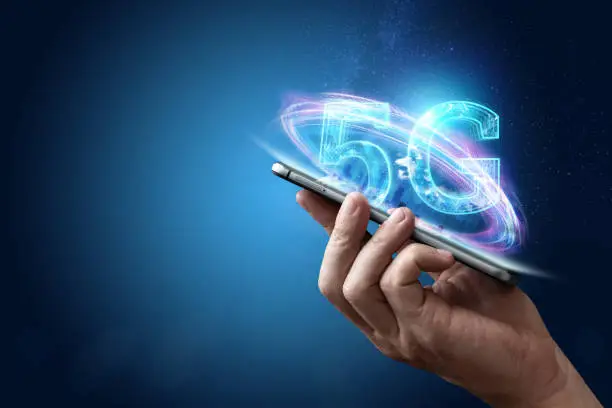
Exploring the Revolutionary Potential of 5G Technology
The advent of 5G has been a game-changer, promising to revolutionize the way we connect, communicate, and experience the digital world.
As the fifth generation of wireless technology, 5G is not just an incremental upgrade; it represents a significant leap forward in terms of speed, capacity, and connectivity.
This blog post aims to delve into the revolutionary potential of 5G technology and its far-reaching implications across various industries.
What is 5G Technology?

5G, or fifth-generation technology, refers to the latest generation of mobile networks and wireless communication technology.
It is the successor to 4G (fourth-generation) technology and is designed to provide faster data speeds, lower latency, increased capacity, and improved connectivity for a wide range of devices.
Key features of 5G technology
#1. Unprecedented Speed and Low Latency
One of the most striking features of 5G is its incredible speed and low latency. With data transfer rates up to 100 times faster than its predecessor, 4G, users can expect seamless and real-time communication.
This opens up possibilities for immersive experiences, such as augmented reality (AR) and virtual reality (VR), enabling applications like remote surgery, virtual classrooms, and augmented retail experiences.
#2. Internet of Things (IoT) Transformation
5G's enhanced capacity and efficiency play a pivotal role in unlocking the full potential of the Internet of Things (IoT).
The massive device connectivity provided by 5G allows for a multitude of devices to communicate simultaneously, facilitating the growth of smart cities, connected homes, and industrial IoT applications.
From smart appliances to autonomous vehicles, 5G creates a robust infrastructure for a fully interconnected world.
#3. Revolutionizing Healthcare
The healthcare sector stands to benefit significantly from 5G technology. The low latency and high bandwidth enable remote patient monitoring, telemedicine, and even remote surgery.
With 5G, healthcare professionals can access and analyze patient data in real-time, enhancing diagnostic accuracy and improving overall patient care.
#4. Enhanced Mobile Experiences
While the speed of 5G is a standout feature, its impact on mobile experiences transcends mere velocity. This next-generation technology brings forth a myriad of improvements, ensuring that users encounter a transformative shift in the way they engage with their mobile devices.
From smoother streaming to quicker downloads and an enhanced gaming experience, 5G sets the stage for a new era of mobile connectivity.
#1. Seamless Streaming: One of the immediate benefits of 5G is its capacity to deliver seamless streaming experiences. With higher data transfer rates, users can enjoy high-definition video content without the frustrations of buffering or lag.
This improvement is particularly noticeable when streaming content on the go, providing users with a more enjoyable and uninterrupted entertainment experience.
#2. Rapid Downloads: 5G's accelerated download speeds redefine the concept of quick access to digital content. Whether it's downloading large files, apps, or multimedia content, users can expect significantly reduced wait times.
This not only enhances convenience but also facilitates a more efficient use of time, allowing users to access and share content on the fly.
#3. Enhanced Mobile Gaming: Gamers, in particular, stand to benefit immensely from 5G technology. The low latency and high-speed capabilities ensure a responsive and immersive gaming experience.
Multiplayer games become more fluid, augmented reality (AR) and virtual reality (VR) applications gain lifelike responsiveness, and cloud gaming services become more feasible, allowing users to enjoy high-quality gaming experiences without the need for powerful local hardware.
#4. Consistent Connectivity in Crowded Areas: 5G's improved network efficiency is a boon for users in crowded areas, such as stadiums, concert venues, or urban centers.
The technology's ability to handle a higher number of connected devices simultaneously ensures that users experience a consistent and reliable connection even in environments with a high concentration of mobile users.
This not only enhances communication but also facilitates a smoother and more reliable mobile experience.
#5. Efficient Use of Network Resources: The efficiency of 5G networks extends beyond raw speed. With more intelligent use of network resources, 5G optimizes data transmission, contributing to a more sustainable and reliable network.
This not only benefits users but also allows mobile operators to manage their networks more effectively, ensuring a balance between demand and supply of connectivity resources.
#6. Enabling Innovative Applications: The enhanced mobile experiences facilitated by 5G open the door to a wide array of innovative applications.
From augmented reality-enhanced navigation to interactive and immersive educational tools, the improved connectivity becomes a catalyst for the development of novel mobile applications that redefine the way users interact with their devices and the digital world.
#5. Empowering Autonomous Vehicles
Autonomous vehicles rely heavily on fast and reliable communication networks. 5G's low latency is crucial for enabling real-time communication between vehicles and infrastructure, enhancing safety and efficiency on the roads.
This technology can pave the way for widespread adoption of self-driving cars, revolutionizing the transportation industry.
#6. Transforming Industries with Edge Computing
5G technology goes hand in hand with edge computing, where data processing occurs closer to the data source rather than relying on a centralized cloud. This is particularly advantageous in industries that require real-time data analysis, such as manufacturing and finance.
The combination of 5G and edge computing can lead to more efficient processes, reduced latency, and improved overall performance.
Challenges and Considerations

Embracing the full potential of 5G technology comes with a myriad of challenges and considerations that necessitate careful attention and strategic planning.
These challenges span across various domains, including security, infrastructure, and health implications.
Addressing these concerns is paramount to ensuring a seamless and successful integration of 5G into our interconnected world.
#1. Security Concerns: As with any technological advancement, security remains a top priority. The increased connectivity and data transfer rates offered by 5G also introduce new vulnerabilities.
Cybersecurity threats, such as hacking, data breaches, and unauthorized access, become more sophisticated with the higher volume of data flowing through the network.
It is imperative to implement robust security measures, including encryption, authentication protocols, and regular updates, to safeguard sensitive information and maintain the integrity of the 5G network.
#2. Infrastructure Requirements: The deployment of 5G networks requires a significant upgrade to existing infrastructure. This includes the installation of a dense network of small cells, advanced antennas, and fiber-optic cables.
The substantial investment needed for this infrastructure upgrade poses financial challenges for telecommunication companies and governments alike.
Striking a balance between cost-effectiveness and ensuring widespread accessibility is essential for a successful 5G rollout.
#3. Spectrum Allocation: The optimal utilization of radio frequency spectrum is critical for the efficient functioning of 5G networks. Competition for spectrum allocation among different services and industries can lead to congestion and interference.
Policymakers and regulators must develop effective frameworks for spectrum management, ensuring fair distribution and coexistence among various users to avoid potential bottlenecks and enhance overall network performance.
#4. Privacy Concerns: The increased connectivity and data exchange facilitated by 5G raise concerns about user privacy. With a growing number of devices connected to the network, there is an escalating amount of personal data being transmitted.
Striking a balance between data collection for improved services and protecting individuals' privacy rights is a delicate task.
Comprehensive privacy policies, transparency, and user consent mechanisms are vital to addressing these concerns and building trust among users.
#5. Potential Health Implications: The deployment of 5G networks has sparked debates regarding potential health risks associated with increased exposure to electromagnetic radiation.
While numerous studies have been conducted, the long-term effects of 5G on human health are not yet fully understood.
Continuous research and transparent communication about the findings are essential to alleviate public concerns and ensure that 5G deployment adheres to established safety standards.
#6. Regulatory Challenges: Navigating the complex regulatory landscape is another significant consideration. Policymakers must adapt regulations to accommodate the unique characteristics of 5G technology while ensuring fair competition and consumer protection.
Striking a balance between fostering innovation and enforcing necessary regulations is crucial for the successful implementation of 5G services.
Conclusion
In conclusion, the revolutionary potential of 5G technology extends far beyond faster internet on our smartphones. It has the power to reshape industries, enable groundbreaking technologies, and create a more connected and efficient world.
As we navigate through this transformative era, embracing the possibilities of 5G while responsibly addressing its challenges will be key to unlocking its full potential and building a future where connectivity knows no bounds.